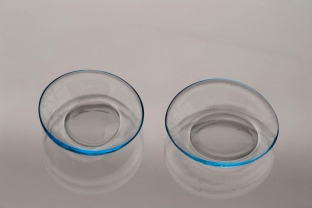Poor vision – it is one of the most widespread problems in the modern world. With the advent of computers, e-books and other similar gadgets, human life has changed dramatically, mostly for the better. But the negative impact on the general state of human health of modern technologies cannot be denied. At the same time, it is thanks to these technologies that medicine finds ways to solve problems with the health of the population. Contact lenses are the most convenient, affordable and effective method of correcting poor vision. What facts about contact lenses should absolutely all doctors know – read on estet-portal.com.
Contact lenses: the most important information
Contact lenses – this is the most effective and modern method of improving visual acuity. About 2% of the world's population uses contact lenses, which are parts made of transparent materials that are worn directly on the eyes. The advent of contact lenses has replaced the use of glasses for vision correction, as it has a number of advantages. Contact lenses are much more comfortable to wear than glasses, they do not collect excess moisture, provide much better peripheral vision, and are also more aesthetically preferable. Since contact lenses are used by a huge number of people today, a representative of any medical specialty should have the necessary minimum information about them.
Contact lenses:
- Main differences between soft and hard contact lenses;
- correct contact lens wearing patterns;
- How often do you need to change your contact lenses.
Main differences between soft and hard contact lenses
All contact lenses are divided into soft and hard. Soft contact lenses tend to absorb water and go beyond the sclera of the eye, while hard lenses do not extend beyond the cornea. There are such differences between these types of contact lenses:
- soft lenses are more comfortable and comfortable, hard lenses are sharper and clearer;
- hard lenses correct astigmatism well due to their strong and precisely defined surface, soft – not corrected enough;
- hard contact lenses are more durable, soft – absorb moisture, so "live" less;
- the probability of soft lenses falling out of the eye is minimal, hard – much higher;
- hard lenses exert pressure on the cornea when blinking, soft lenses – do not apply pressure, when worn, the sensitivity to bright light is reduced.

Correct contact lens wearing patterns
Every person facing the problem of vision correction is concerned, first of all, with the need to remove lenses at night. There are the following modes of wearing contact lenses:
- long continuous wearing – such lenses, made of special materials, can be worn continuously for 30 days;
- extended wear – the duration of continuous wearing of such lenses is 7 days, that is, 6 nights in a row. One night a week, the eyes should rest from the lenses. Lenses should be changed weekly for new ones;
- flexible wearing – for such lenses, episodic sleep in lenses is acceptable, but not more than 3 consecutive nights;
- day wear – lenses of this mode must be removed every night, after cleaning they must be placed in a special solution for disinfection.
How often do you need to change your contact lenses
According to how often contact lenses need to be replaced, they can be divided as follows:
- traditional lenses – should be changed every 6 months or less. These lenses are only available in bottles;
- replacement lenses – are available in vials and in blister packs, require replacement after a few months (no more than three);
- frequently scheduled replacement lenses – are available only in blister packs and require replacement in one to two weeks;
- daily replacement lenses – these contact lenses need to be changed daily, are maintenance-free and are available exclusively in blister packs.







Add a comment